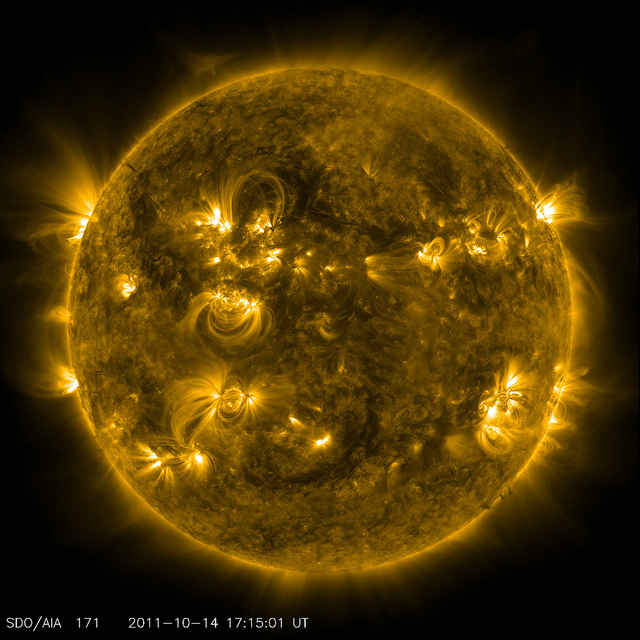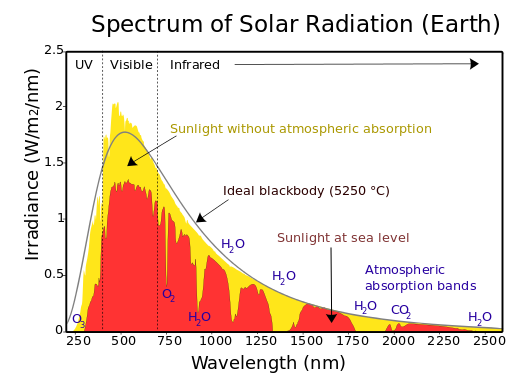6.4 The Solar Spectrum

The Sun emits radiation from X-rays to radio waves, but the irradiance of solar radiation peaks in the visible wavelengths (see figure below). Common units of irradiance are Joules per second per m2 of surface that is illuminated per nm of wavelength (e.g., between 300 nm and 301 nm), or W m–2 nm–1 for the plot below. These units are the units of spectral irradiance, which is also simply called irradiance, but as a function of wavelength. To get the total irradiance in units of W m–2, the spectral irradiance should be integrated over all the wavelengths.
Note the following for the solar spectrum:
- About half of the energy is in the visible wavelengths below 0.7 μm. We can tell this by doing a quick integration.
- O3 and O2 absorb much of the UV irradiance below 300 nm high in the atmosphere.
- About 70% of the visible irradiance makes it all the way to sea level.
- O3 absorbs a little of the visible irradiance.
- A significant fraction of the visible irradiance is scattered by clouds and aerosol. Some is reflected back out into space so that this portion never deposits energy in the Earth system.
- There are large wavelength bands in which water vapor, CO2, and O3 absorb infrared irradiance.
For solar wavelengths at which the absorptivity is high, the solar irradiance at sea level is small. Note that the big absorbers of infrared irradiance are water vapor, carbon dioxide, and ozone.

Quiz 6-1: Sun fun facts.
- Find Practice Quiz 6-1 in Canvas. You may complete this practice quiz as many times as you want. It is not graded, but it allows you to check your level of preparedness before taking the graded quiz.
- When you feel you are ready, take Quiz 6-1. You will be allowed to take this quiz only once. Good luck!